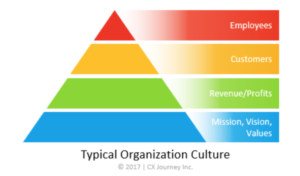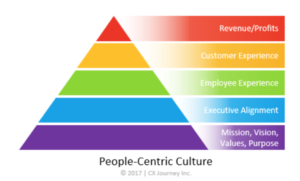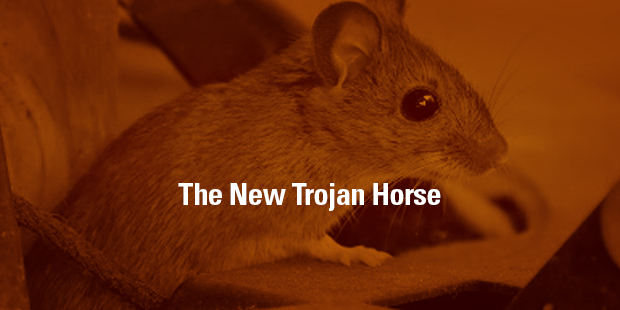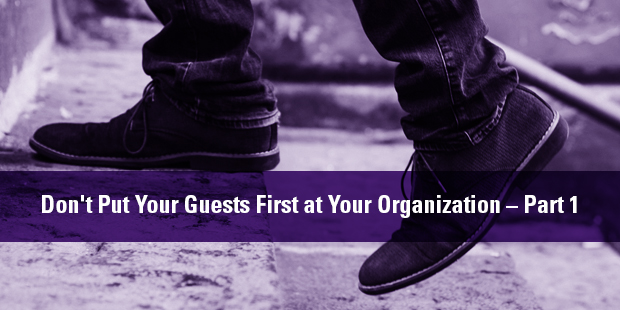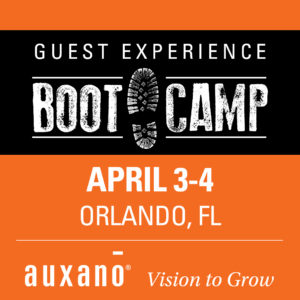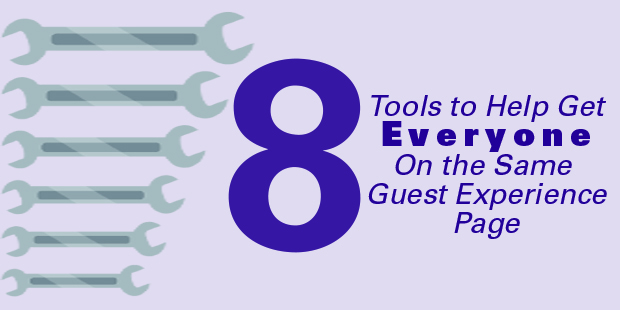
Are Your Guests Stuck?
Editor’s Note: During our August focus on Guest Experiences, we are honored to have some of the best voices in the world of Customer Experience provide guest posts for the Vision Room. As you read the content below, simply think “Guest” in terms of the “customer” the author is talking about – and you will benefit from the knowledge and expertise of these great minds.
I originally wrote today’s post for Forbes. It appeared on the Forbes site on October 18, 2018. I’ve made some slight modifications since then, as it turned into a two-part series.
The good news is that you’ve embarked on a customer experience transformation journey. The bad news is that you don’t think your organization has evolved as much as you’d hoped it would by now. Perhaps you started to see progress, but it suddenly seems like forward movement has stalled.
You’re not alone. A lot of companies are, or claim to be, working to improve the customer experience, with little or no visible evidence. Companies are still treating customers poorly. And customers are still complaining.
What’s going on?
In this two-part series, I will provide my thoughts on why customer experience transformation efforts stall or slow. In part one, I’ll focus on those reasons attributed to company leadership; in the second part, I’ll outline reasons associated with employees and operations. (Ultimately, it’s all on leadership, but I’ll drill down a bit in part two.)
1. Misplaced or Mistaken Focus
You know the old “acquisition vs. retention” debate. Acquiring customers is so much easier than retaining; retention is hard work, and it’s a huge part of what the customer experience transformation work is all about. Focusing on acquisition yields a much faster ROI, especially when companies are driven by growth metrics.
Because retention — and hence customer experience transformation — work is slow and difficult, people get bored and tend to fall back into their old habits rather than relentlessly driving toward the ultimate goal. It’s important to recognize that a customer experience transformation is all about baby steps. In order to keep people energized and focused, share quick wins, and celebrate successes as you progress.
2. The Revenue Conundrum
Related to the misplaced focus on acquisition is that message you receive from the CEO that starts with, “Revenue is down this quarter. We need all hands on deck, focusing on drumming up new business.” Suddenly, all of your customer experience transformation resources are shifted to business development and sales efforts.
Interestingly enough, the first question the CEO should ask is: “Why are sales down?” Is it a quality or performance issue? Is it that you’re getting Blockbuster’d? Do you really understand what your customers’ needs are and what jobs they are trying to do?
I’ve seen this scenario play out a few times, and each time, if they would’ve fixed what was ailing them, then sales numbers wouldn’t be down. Don’t take your eyes off the ball. Stay focused on the customer and the customer experience. Stay focused on the work that you’re doing to improve the experience. After all, a poor experience is likely why customers aren’t buying.
3. Actions Speak Louder Than Words
It’s a fact: in order to successfully transform your culture to be one that is customer-focused, customer-centric, and customer-obsessed, you must start with executive commitment. Without that commitment, you will not get the resources – human, financial, capital, or other – that you’ll need to implement real change.
But… And there’s always a “but,” isn’t there? But, if you get a verbal commitment that’s not supported by the actions (e.g., actually assigning the resources, modeling the behavior, walking the walk, etc.) or if you got a commitment that had initial support (actions) that has since waned, you’ve got a problem. You’re now in a holding pattern until actions once again shore up the words.
4. It Hasn’t Been an Enterprise-Wide Effort
When you have executive support and commitment across the entire organization, the change efforts will have a much greater chance of taking hold and being successful. If you don’t have organization-wide support, or (especially) if the CEO isn’t on board, sure, you can start making changes within pockets of the organization, but you won’t get far. A true transformation must involve all departments; there can be no silo’d efforts. Customers actually know when the focus (and the experience) is silo’d!
5. Communications Aren’t Open and Continuous
I heard this great quote from leadership development experience Susan Scott the other day: “What gets talked about in an organization and how it gets talked about determines what’s going to happen or isn’t going to happen.” So true! Communicating the vision, the how, the why, the what’s in it for me, etc. is so important when you’re going through this type of transformation. And the communication must be open and ongoing. Provide progress updates. Answer questions. Talk about and celebrate quick wins. Keep the conversation going. Things that leaders talk about are deemed important by employees; things that are not, well, are not considered to be important.
6. Sense of Urgency Wasn’t Established/Maintained
According to John Kotter, the first step of any change initiative is to create a sense of urgency. What’s the burning platform in your business? Pick one: Customers are leaving. Employees are leaving. Costs are rising. Processes are out of whack. The culture is a mess. Bankruptcy. Impending hostile takeover. They’re all bad. If you haven’t clearly communicated, including ongoing reminders, to your employees what the burning platform is and created that sense of urgency, they forget the why. Thoughts shift to, “Things aren’t so bad; why should we change?” or “It’s just business as usual; what’s the big deal?” And then you lose them.
No one ever said that a customer experience transformation was easy. It’s a lot of work and requires a dedicated and relentless focus on making things better. If you’ve seen your progress slow, evaluate your efforts against the six items I’ve written about here. And stay tuned for several more reasons coming in the second part of this two-part series.
It takes 20 years to build a reputation and five minutes to ruin it. If you think about that, you’ll do things differently. -Warren Buffett
Want to know more about Guest Experiences at your church? Let’s talk! Connect with an Auxano Navigator here.

Tags: Annette Franz, Church Guest Experience, Guest Experience
















